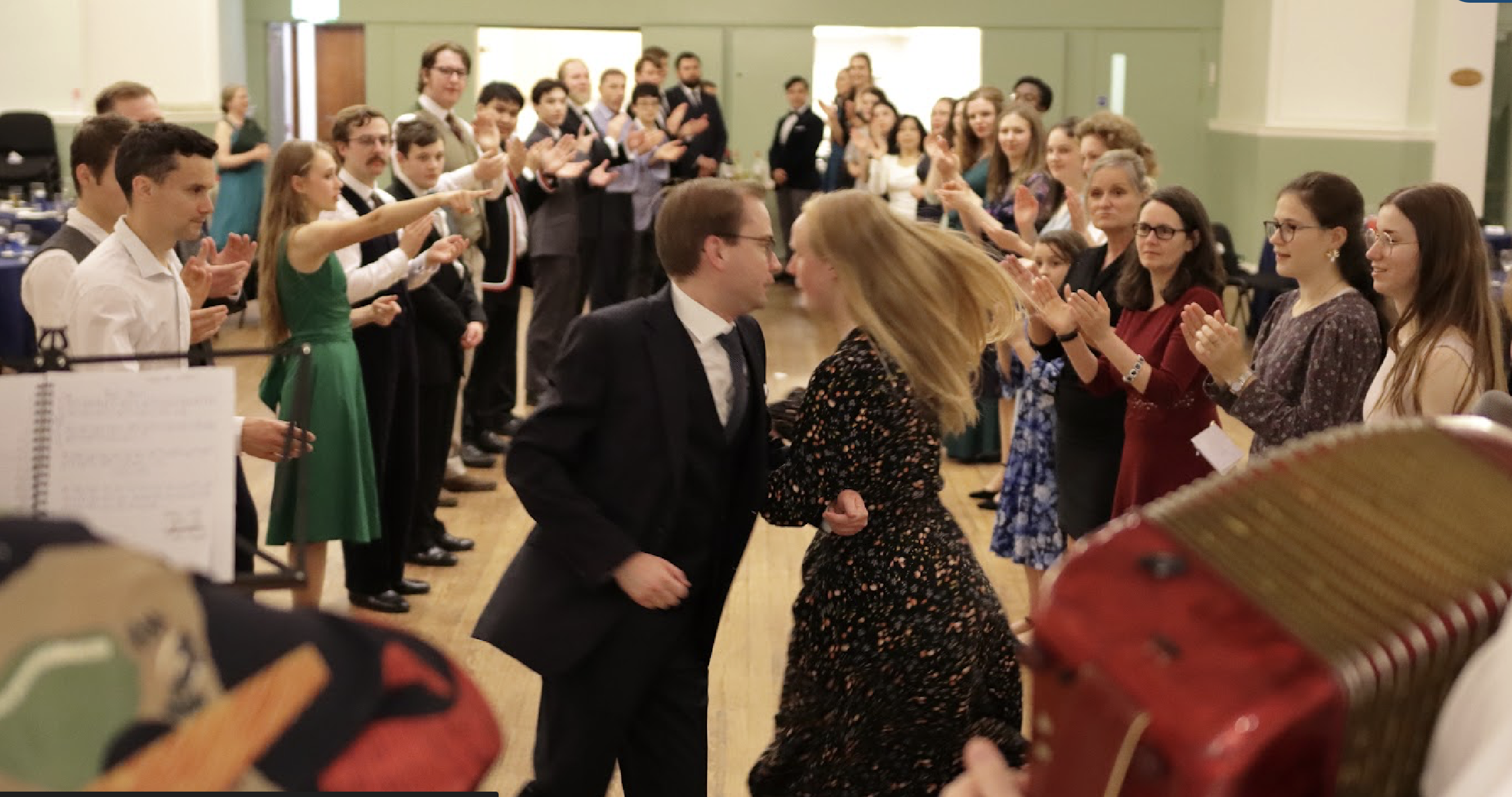Your basket is currently empty!
A Village or the Parish

I have been musing over the role of dance in friendship and so turned again to Michael Platt’s astonishing and insightful 2009 essay “A Different Drummer.” Actually a thoughtful jeremiad against rock music, Platt’s composition beautifully captures what social dancing was before rock atomised us all:
Rock ‘n roll being danceable, if only in a loose, nay a wild, sense of the word, the question naturally arises: what kind of dancing fits it and what effect does such dancing have on the soul? In all dancing, the dancers move to the same music; mere individuals are formed into a community. But there are so many ways of arranging a community — or not. In all dancing in the West, at least since the Renaissance, the couple exists between the music and the individual; in all this dancing you have to co-ordinate yourself to your partner and, often enough, you and your partner have to coordinate yourselves to other couples (think of square dancing). The first points toward marriage, the second toward a village.
I do not think of American swing dancing here, of course, but of Scottish country dancing or its upstart little sister, ceilidh dancing.
In traditional Western dancing, you see both separate couples and these couples in a relation. Square dancing is but one instance of the traditional pattern that survived. In contra-dancing, such as the Virginia Reel, the couples are arranged in a long line, and every couple makes its way down the line, not just dancing with three other couples, as in square dancing, but with all the couples that make up the line, the length of the music being stretched to fit it. In this dancing the proportion between attention to the couple and to the set of couples is weighted toward the set, at least in comparison to square dancing. Also, there is less slapping and stamping; it’s more nearly elegant, and less coupled, but the pattern is roughly the same: couples in relation to each other making up a visible whole, with the individual couples pointing to marriage, and the whole pattern
pointing to a village or the parish.
What comes most swiftly to mind after reading this is not the Virginia Reel but Scotland’s “Strip the Willow,” the almost riotous dance that usually ends a ceilidh. Ideally, it brings together the entire community of dancers: a long line of gentlemen faces a long line of ladies, and after winding itself into a human top, the top couple breaks in half to dance arm-in-arm (1-2-3-4!) with the next man or woman in the row. They then rejoin in the middle (5-6-7-8!) and separate again to dance with their next partner (1-2-3-4!). Meanwhile, the new top couple set themselves spinning by turning each other for a count of 16. They then leap apart to turn a new partner from the opposite sex side, and so on.
This whole pattern most definitely points “to a village or the parish” when you are dancing with your real fellow villagers or parishioners or, in the case of a Mrs McLean’s Waltzing Party dance, with fellow “Catholics who love the Traditional Latin Mass (and those who like us.)”
The brackets represent both a joke and a hug. The joke is that Catholics who love the Traditional Latin Mass (sometimes called Trads) are occasionally calumniated as killjoys unpleasantly obsessed with minutiae, and thus we should be happy for any friends we can get. The hug is for other Catholics in the Church and for non-Catholic (as yet) friends and family who want to join in the fun. In post-Reformation Scotland, “a village or the parish” is usually going to include Protestant (or post-Protestant) relations or pals. We love them, too.
Strip the Willow can be a wild dance, and I tell my people (paraphrasing George Macdonald Fraser) that there is Strip the Willow for soldiers, and there is Strip the Willow when ladies are present, and this Strip the Willow has ladies present, so do not fling them about. On Saturday, there were not only ladies but children, and I called out warningly whenever dancers came leaping over to the small girl at my side. When I formed half of the top couple, however, I felt euphoric: it was partly the spinning, partly the music, but largely dancing with the whole community, knowing everyone’s name and whence they came.
It was really quite incredible. More thoughts on this later. Oh, and many thanks to Dr. Peter Kwasniewski for both bringing attention to Michael Platt’s essay in his own Good Music, Sacred Music, and Silence and for linking to this blog. The reaction of one of his Facebook friends to my report on the Third Annual Michaelmas Dance (or perhaps just to the photo of couples dancing) was “Civilization.” Yes. A thousand times, yes.
Thank you to all those who made the Michaelmas Dance 2025 such a success! A very Happy Feast Day to you all. Coorie in!

Leave a Reply
You must be logged in to post a comment.